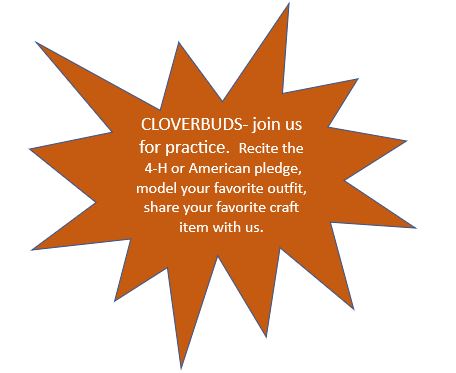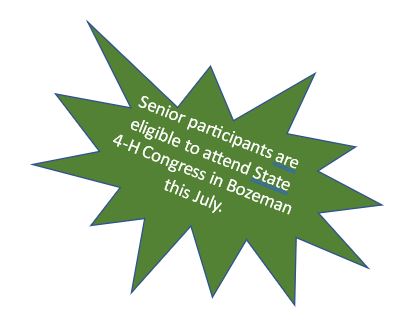Flathead 4-H County Congress
To find out more information on County Congress, scroll below the registration form.
 Juniors, Seniors AND Cloverbuds…
Juniors, Seniors AND Cloverbuds…
DON'T MISS

FLATHEAD 4-H COUNTY CONGRESS
Flathead 4‐H Congress provides youth from across the county an opportunity to come together and participate in an event like no other. Public Speaking, Sewing and Textiles, and Livestock Judging.
At Congress, 4‐H members will learn, compete, be challenged and most of all have a great time with their peers. Congress is an important educational opportunity for our county’s 4‐Hers and is the signature event for the Montana 4‐H Program.
The purpose of Congress is to provide a safe and fun environment for youth to experience public speaking opportunities that will help them throughout their lifetime.
This is your opportunity to have your poetry, speech, illustrated talk and/or demonstration judged by people who know a lot about that field and who can give you critical feedback.
Congress will also help you feel more confident in your abilities and it will help you to become a stronger leader in your club and community.

2024 FLATHEAD COUNTY 4-H CONGRESS
APRIL 27, 2024
Ag Center
Team Building Downtime Event - Cardio and Games
Communication/Sewing/Stir-Ups Events
9:30 am-12:00 pm
Lunch/Awardsfor morning activities (lunch is provided)
12:00-12:30 pm
Livestock Judging (all clinic members must participate in Livestock Judging to earn clinic credit. Non-clinic members please come at 2:00 to participate in this County Congress Event.
12:30-3:00 pm (awards to follow)
Registration Deadline: SundayApril 14, 2024 by 5:00 pm
Please plan on ejoying the day with us. Fun activities planned.
The U.S. Department of Agriculture (USDA), Montana State University and the Montana State University Extension prohibit discrimination in all of their programs and activities on the basis of race, color, national origin, gender, religion, age, disability, political beliefs, sexual orientation, and marital and family status. Issued in furtherance of cooperative extension work in agriculture and home economics, acts of May 8 and June 30, 1914, in cooperation with the U.S. Department of Agriculture, Cody Stone, Interim Director of Extension, Montana State University, Bozeman, MT 59717
 FLATHEAD 4-H COUNTY CONGRESS REGISTRATION FORM
FLATHEAD 4-H COUNTY CONGRESS REGISTRATION FORM
Registrations must be submitted by5:00 pm, Sunday April 14, 2024
MSU Extension Office1108 S. Main St. Ste. 4, Kalispell (online)
Competition Resources
If you plan to compete in one of the many communications contests check out the resources available here. There are examples and documents that will help you prepare for participation in these contests.
From https://www.montana.edu/extension/4h/programs/events/mt_4h_congress/index.html
If you wish to compete during the County 4-H Congress, you will need to present your talk, project or ability to compete on Saturday, April 27th, at the AG Center. Competitors that are going to compete at the MT 4-H Congress will need to register by June 15th.
Agribusiness Public Speaking
OBJECTIVES
- Development of targeted life skills: Communication and Decision Making
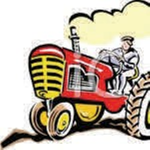
- Development of public speaking skills.
- Reinforcement of 4-H project work relevant to the agribusiness issues and the use of chemicals as they relate to the environment and food safety.
- Encouragement of participants to become familiar with scientific
research on the benefits of proper chemical use in agricultural production, marketing and processing.
ACTIVITY
Notes may be used during your speech (preferably notes should be on 3-inch x 5-inch cards). You should not state your name, county, or club at the beginning of your speech, and you should not use props or charts during the speech. Use of props will result in disqualification. The speech must be factual and supported by at least three references that are cited during the speech.
SuggestedSeniorTopics:
- Food Safety, Whose Responsibility?
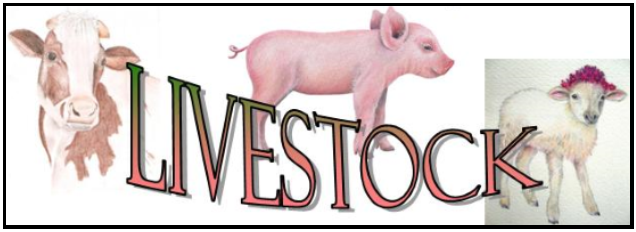
- Are U.S. Farmers Overburdened with
Environmental Regulations?
SuggestedJuniorTopics:
- Balancing Agriculture Production and Environmental concerns
- America’s Food—Safe & Good
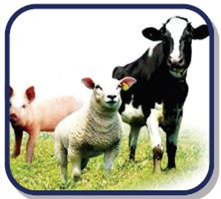 Presentation Requirements:
Presentation Requirements:
Juniormembers speech requirements:
- 2-8 minute presentations
Seniormembers speech requirements:
- 5-10 minute presentations
Citizenship Illustrated Talk
OVERVIEW
This activity consists of an illustrated talk that demonstrates a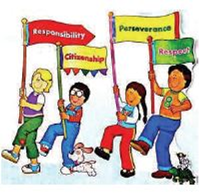
4-H’ers understanding of government, laws, history, citizen involvement, public policy, or other topics related to citizenship in the United States.
OBJECTIVES
- Targeted Life Skills: responsible citizenship, leadership, community service, volunteering, self-responsibility, character, service learning, decision making, planning and organizing, communication, cooperation, accepting differences, empathy, and concern for others.
- Provide young people with the opportunity to display their knowledge and/or experience in a topic related to citizenship.
- Encourage participants to learn about and become an engaged citizen.
- Develop integrity, cooperation, and the ability to speak in public.
ACTIVITY
Each participant should be prepared to present an illustrated talk or method demonstration on a topic related to citizenship. Topics can fall into many areas, including but not limited to:
- Civic Engagement
- Citizen Responsibility
- Rule of Law
- How to Become a Citizen
- How to Be a Better Citizen
- Voter Rights
- Volunteerism
- Flag Etiquette
- Activism
- Community Service
- Local, State, or National Government
- Public Policy
- Respect for Diversity.
Presentation Requirements:
Juniormembers speech requirements:
- 2-8 minute presentations
Seniormembers speech requirements:
- 5-10 minute presentations
Health Illustrated Talk
OVERVIEW
The health actvity is designed to help 4‐H members make informed decisions related
to health and promote healthy lifestyle choices.
healthy lifestyle choices.
OBJECTIVES
- Targeted Life Skills: healthy lifestyle choices, self‐responsibility, goal‐
setting, decision‐making, wise use of resources, responsible citzenship
- To identify a health topic and learn about various ways to improve individuals’ health.
- To demonstrate knowledge in the area of improving personal health.
- To present a demonstration on the chosen health‐related topic to illustrate the youth’s ability to per‐form the health improving activity.
- To develop leadership and public‐speaking skills.
ACTIVITY
Topics can include, but are not limited to: good nutrition, exercise, reducing stress, adequate sleep, brain simulation, etc. As long as the youth demonstrates in his/her presentation how his/her topic improves a person’s health, it will be accepted.
Partcipants will also be required to do the following:
- Introduce themselves and state why they selected to talk about this particular focus area of personal health improvement.
- Provide data relative to the health topic that shows how it improves personal health.
- Needs to be pertinent to children/teenagers/families.
- When using visuals/graphics, be sure they are easily read and understood. The activity/demonstraƟon can be the student demonstraƟng the activity or asking for audience partcipation.
EXAMPLES OF TOPICS
- If the youth wants to give a presentation on healthy eating, he/she can talk about healthy snacks then demonstrate how to make “ants on a log” (celery, low fat peanut butter, and raisins); or if he/she wants to talk about reducing unhealthy food choices, he/she can bring a sugar bowl and spoon out the number of teaspoons of sugar in a candy bar/soda/toaster pastry.
- If the youth wants to talk about exercise and he/she is in a karate class, he/she can go through a routine, or if he/she wants to talk about stretching, he/she can lead the audience through a couple of stretches.
- If the youth wants to talk about reducing stress, he/she can lead the audience through a relaxation technique such as deep breathing, or bring a large calendar and show how to color‐code activities so they are easier to manage.
- If the youth wants to talk about reducing head injury, they can show how to properly fit a helmet, or bring the different types of helmets and explain how there are different types of helmets for different activities.
- Please do not limit the youth to these few examples. The topic of personal health improvement is very broad. By including the demonstration, this insures that the health topic is something the youth, themselves, can partcipate it.
Presentation Requirements:
Junior members speech requirements:
- 2-8 minute presentations
Senior members speech requirements:
- 5-10 minute presentations
Entomology Illustrated Talk
OVERVIEW
This entomology activity is held so that 4-H members can become better acquainted
with the insect world in which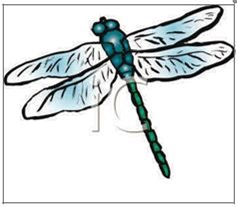 they live. Collecting and researching one insect can help them become
they live. Collecting and researching one insect can help them become
more aware of the complex role insects play in our environment.
OBJECTIVES
- Targeted Life Skills: Critical thinking, self-motivation
- To develop their observation skills in their quest for an insect
- To develop and improve communication skills
- To develop research skills
- To realize that a career in entomology can be rewarding
ACTIVITY
The Entomology talk consists of an illustrated talk and the collection of one insect pinned to specifications found in publication 4HCCS 6854 “What’s Bugging You?”, or the subject specimen can be displayed in a properly labeled vial of alcohol. The illustrated talk must show that the participant has identified the insect and understands how it lives and works in the environment.
 Presentation Requirements:
Presentation Requirements:
Junior members speech requirements:
- 2-8 minute presentations
Senior members speech requirements:
- 5-10 minute presentations
Possible presentations could cover:
- Bark Beetles
- Crawling Water Bugs
- Darner Dragonflies
- Mountain Mayflies
- Northern Caddisflies
- Short-horned Grasshoppers
- Stinkbugs and Shield bugs
- Tiger Beetles
- And more!!!
With over 200,000 species of beetles
ALONE, the topics can be limitless.
Human Development Illustrated Talk
OVERVIEW
This activity is conducted to offer 4-H members a better understand of themselves
and others, and to demonstrate what they have learned by sharing with others some of their interests and achievements
in the area of human development.
what they have learned by sharing with others some of their interests and achievements
in the area of human development.
OBJECTIVES
Targeted Life Skills:
- nurturing relationships -service to others -decision-making
- child guidance -social skills -accepting differences
- conflict management -cooperation -communication
- stress management -self-discipline -self-awareness & self- discovery
ACTIVITY
- To participate, each member should be prepared to give an illustrated talk or demonstration on some aspect of human development.
- All topics should be based on scientific research rather than personal opinion. However, participants can use personal experiences or examples to help illustrate the scientific principles.
- Each participant should be able to answer questions pertaining to the demonstration or talk.
SUGGESTED TOPICS FOR A DEMONSTRATION OR ILLUSTRATED TALK
“The Keys to a Strong and Healthy Family” “Preparing for Healthy Adult RelaƟonships” “Helping Children Through a Divorce” “What the Research Says About Happiness” “How to Test Young Children’s Toys for Safety” “What I Do to Stay At Home Alone More Safely”
“Teaching Responsibility to Children” “Appropriate Toys Help Children Grow and Learn” “Making a Home Safe for Children” “This Is What Youth ages 5‐8 Are Like”
“How To Change Your TV Watching Habits” “Building Friendships”
“Making Your Town More Friendly to “How Family Diversity and Similarities Makes
Persons with Disabilities” Communities Strong”
“Fun Times with Senior Citzens” “Developing Character in Children” “Puppets Can Teach Many Things” “The Importance of Exercise” “Making Playgrounds Safe” “How to Share Music with Children” “How to Help A Child Learn”
Presentation Requirements:
Junior members speech requirements:
- 2-8 minute presentations
Senior members speech requirements:
- 5-10 minute presentations
Horse Activity Illustrated Talk
OBJECTIVES
- Targeted Life Skills: Self-esteem, Self-motivation, Character, Self-discipline, Planning/Organizing,
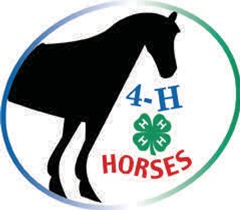 Communication, Leadership, Critical Thinking, Problem Solving
Communication, Leadership, Critical Thinking, Problem Solving - The opportunity will be provided for participants to display their knowledge of horse industry.
- The horse activity will provide an educational 4-H activity in addition to 4-H horse shows in which those interested in the 4-H hose project can participate.
- 4-H’ers will have the opportunity to develop integrity, sportsmanship, cooperation, and the ability to speak in public.
ACTIVITY
Each participant should be prepared to present an illustrated talk or method demonstration in an area related to the horse industry. Presentations can deal with topics related to horse science, safety, training, equipment, horsemanship, occupations related to the horse industry, and horseback riding as a recreational activity. A few suggested topics for the horse activity are as follows:
|
· Rules of good horsemanship |
· Training a horse |
|
· Use and care of tack & equipment |
· Safety |
|
· Fitting & showing |
· Physiology |
|
· Gaits of horses |
· Nutrition requirement |
|
· Balancing rations of horses |
· Horse psychology and behavior |
|
· Functional anatomy and action |
· Hoof care and shoeing |
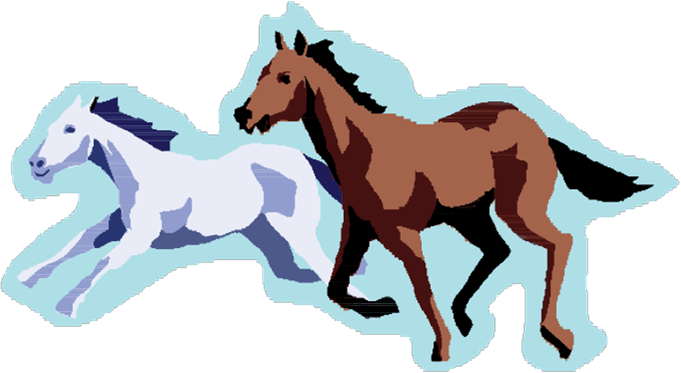 Presentation Requirements:
Presentation Requirements:
Junior members speech requirements:
- 2-8 minute presentations
Senior members speech requirements:
- 5-10 minute presentations
Pet Care Illustrated Talk
OVERVIEW
The pet care and training activity is designed to allow 4-H members to exhibit the
skills and knowledge they have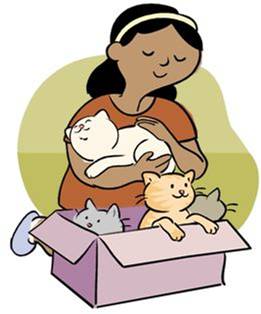 obtained from pursuing their interest in pets. 4-H members will
obtained from pursuing their interest in pets. 4-H members will
display knowledge of proper pet health, nutrition, grooming and training. In addition, communication skills will be improved through an oral presentation.
OBJECTIVES
- Targeted Life Skills: responsible citizenship, leadership, community service, volunteering, self-responsibility, character, service learning, decision making, planning and organizing, communication, cooperation, accepting differences, empathy, and concern for others.
- Provide young people with the opportunity to display their knowledge and/or experience in a topic related to citizenship.
- Encourage participants to learn about and become an engaged citizen.
- Develop integrity, cooperation, and the ability to speak in public.
ACTIVITY
Each participant should present an illustrated talk in an area of general pet care and training. The presentations can deal with species such as birds, cats, dogs, hamsters, rabbits, or other small animal pets.
A few suggested topics for the pet care and training activity are as follows:
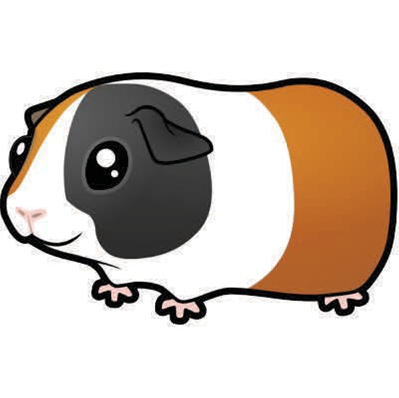
- Pet health
- Pet training
- Proper pet nutrition
- Pet grooming
- Selecting a pet
- Responsible pet ownership
- Pet breed standards
- Local government pet ownership regulations
Presentation Requirements:
Junior members speech requirements:
- 2-8 minute presentations
Senior members speech requirements:
- 5-10 minute presentations
Livestock Science Illustrated Talk
OBJECTIVES
- Targeted Life Skills: Self-esteem, Character, Self- discipline, Self-motivation, Teamwork,
Leadership,
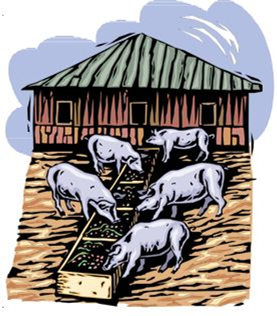 Cooperation, Planning/Organizing, Critical Thinking, Problem Solving
Cooperation, Planning/Organizing, Critical Thinking, Problem Solving - The opportunity will be provided for participants to display their knowledge of animal genetics, reproductive physiology, production, nutrition, management, and/or marketing practices.
- Participants will be encouraged to become familiar with scientific research and its influence on animal production, management, and marketing practices.
- 4-H’ers will have the opportunity to develop integrity, sportsmanship, cooperation, and the ability to speak in public.
ACTIVITY
Each participant should be prepared to present an illustrated talk or method demonstration in an area of animal science such as animal genetics, production, nutrition, management or marketing practices. The presentation can deal with animal species such as beef, llama, swine, poultry, goats, sheep and other livestock. (Method demonstrations and illustrated talks related to horses must be presented in the "4-H Horse Activity.") A few suggested topics for the animal science activity are as follows:
- The Advantages of Crossbreeding in Beef Cattle
- How to Formulate Feed Rations
- Grading of Beef
- Selection of Gilts for Breeding
- The Stages of Egg Incubation
- The Value of Performance Records
- Or other...
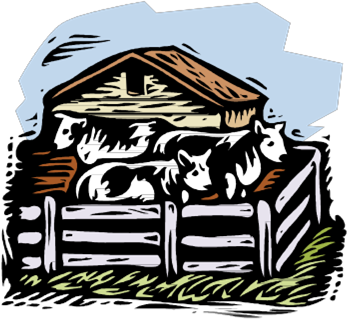 Presentation Requirements:
Presentation Requirements:
Junior members speech requirements:
- 2-8 minute presentations
Senior members speech requirements:
- 5-10 minute presentations
Veterinary Science Illustrated Talk
OBJECTIVES
- To provide young people of life skills, such as self-responsibility, critical thinking,
leadership, responsible
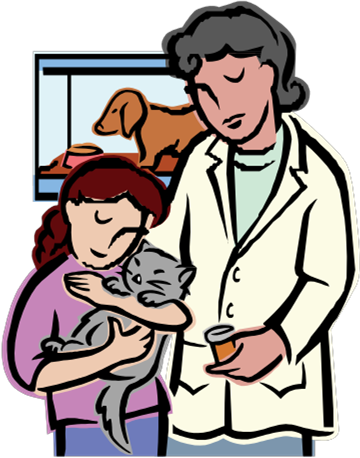 citizenship, communication techniques, and disease prevention capabilities.
citizenship, communication techniques, and disease prevention capabilities. - To provide young people with an opportunity of exploring the field of veterinary medicine as a career.
- To provide young people with an opportunity of acquiring knowledge, developing skills, and forming attitudes that will be useful in later life.
- To help young people develop a better understanding and appreciation of veterinary medicine and animals.
- To help young people understand the importance of good management, good care, and sanitation practices.
ACTIVITY
Each participant should be prepared to present an illustrated talk or demonstration on some area of veterinary science. This can be in conjunction with dog care, horse, beef, dairy, swine or poultry projects. Those talks dealing with abnormal processes such as diseases, parasitism, toxicities or defects should be presented in the veterinary science activity. Talks demonstrating normal physiological processes may be presented in veterinary science. Livestockproductionpracticesshouldbepresentedinanimalscience
activities.
EXAMPLES OF TOPICS
A few suggested topics for Vet Science activity are as follows:
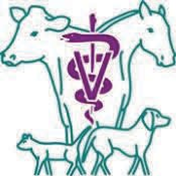
- Immunology
- Diseases of any animal species
- Restraint of animals
- Drugs and their Uses
- Regulatory veterinary programs
- Historical reviews of veterinary science
- Internal/external parasites of any species
- Diseases transmitted from animal to man
- Laboratory procedures
- Surgical procedures
Presentation Requirements:
Junior members speech requirements:
- 2-8 minute presentations
Senior members speech requirements:
- 5-10 minute presentations
Safety Illustrated Talk
OVERVIEW
The 4-H Safety Activity is designed to give 4-H members an opportunity to demonstrate
their interest
and knowledge in safety.
OBJECTIVES
- Targeted Life Skills: Communication and Personal Safety
- To stimulate a more active interest in farm, home, and traffic safety.
- To encourage further reading, study, and discussion on the subject, and to strengthen 4-H safety projects.
- To stimulate county action programs for the promotion of safety and the prevention of accidents.
ACTIVITY
The junior activity will be a show-and-tell discussion or an illustrated talk on a single phase of farm, home, or traffic safety. The presentation will last three-five minutes. The senior participant will give an illustrated talk of
five-eight minutes on any phase of safety.
Participants will also be required to:
- Introduce themselves and state why they selected to talk about this particular focus area of safety.
- Provide data relative to the topic that shows how the particular safety measure improves lives.
- When using visuals/graphics, be sure they are easily read and understood.
EXAMPLES OF TOPICS
A few suggested topics for safety activity are as follows:
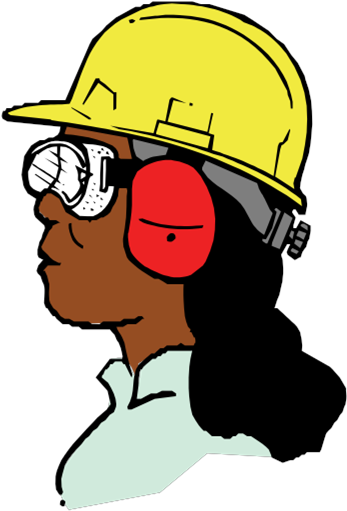
- Farm safety
- Hazardous material safety
- Construction safety
- Tractor safety
- ATV safety
- Gun safety
- Safe electricity usage
- Water safety
- Firearm safety
- Car seat safety
Presentation Requirements:
Junior members speech requirements:
- 2-8 minute presentations
Senior members speech requirements:
- 5-10 minute presentations
Photography Judging
Photography Rules:
Participants may enter 1 photo that must be 5 x7. The photo may either be colored or black and white. Participants are encouraged to use a 8x10 mat. The photography contest will include a junior and senior level category with ribbons awarded to the top 3 in each category. Youth will present their photo and provide a summary of how to get pictures ready for the NWMT Fair and how to register for the 4-H photography competition at the fair. Youth that enter in the County Congress Photography Contest are also required to participate in at least one other County Congress Event. The aim of this competition is to help participants prepare to enter the 4-H photography competition at the 2024 NWMT Fair.
4-H Photography Contest Score Sheet
Name: Age: County:
Category: 4-H in Action Natures's Beauty Humor
Title:
Judges: Evaluate the following components by placing number of points earned (0-5) beside each criteria in the points column. Add points for an overall total. Judges scores will need to be averaged and discussed to arrive at a combined (average) score for each participant to determine ribbon color.
| Points to Consider | Points | Judges' Comments |
| I. PHOTO STORY (20 points) | ||
| A. Did the photographer introduce self and provide the title of the photo? (5 pts) | ||
| B. Did he/she describe the photo's subject, action, setting? (5 pts) | ||
| C. Did he/she talk about the methods used to capture the image? (5 pts) | ||
| D. Did the photographer tell the "story" behind teh photo in such a manner that you felt part of the photo? (5 pts) | ||
| II. CREATIVITY (15 points) | ||
| A. Photo uses the subject to deliver a message in a creative way. (5 pts) | ||
| B. Photo/subject captures the attention of the viewer. (5 pts) | ||
| C. Creative use of camera. (5 pts) | ||
| III. LIGHTING (10 points) | ||
| A. Exposure (not underexposed or washed out, or overexposed with dark images and lack of detail) (5pts) | ||
| B. Brightness (Image and details stand out clearly) (5 pts) | ||
| IV. FOCUS (15 points) | ||
| A. Camera held steady (5 pts) | ||
| B. Appropriate part of image in sharp focus and defined (5 pts) | ||
| C. The focus is appropriate to the theme or mood of the photo (5 pts) | ||
| V. COMPOSITION/ARRANGEMENT (15 points) | ||
| A. Has a definate subject (5 pts) | ||
| B. Pleasing selection and arrangement of subjects within picture area (5 pts) | ||
| C. Perspective enhances the image (5 pts) | ||
| VI.RELEVANCY TO CATEGORY TOPIC (10 points) | ||
| A. Does the photo illistrate the category in which it is entered? (5 pts) | ||
| B, Does the picture's title reflect the category in which it is entered? (5 pts) | ||
| VII. POISE/PRESENCE (15 points) | ||
| A. Does the photographer have self-assurance, yet pleasant manner? (5 pts) | ||
| Does the photographer make eye contact? (5 pts) | ||
| C. Is the photographer presentable in appearance? (5 pts) | ||
| Total Points |
Final Rating: (circle appropriate one) Blue (90-100) Red (75-89) White (74 or below)
Fashion Revue—Purchased
OVERVIEW
This activity will consist of a short presentation and modeling of garments purchased by the contestant.
OBJECTIVES
|
Targeted Life Skills |
||
|
· Marketable Skills |
· Social Skills |
· Problem Solving |
|
· Self-Esteem |
· Decision Making |
· Wise Use of Resources |
|
· Critical Thinking |
· Planning/Organizing Cooperation |
|
|
· Record Keeping |
|
|
To recognize 4-H members who have excelled in clothing projects and exhibit skills
in the following: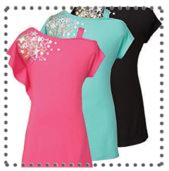
- Application of knowledge of fibers and fabrics to wardrobe selection
- Comparison shopping
- Fashion interpretation and understanding of style
- Good grooming and poise in front of others
- Modeling and presentation of themselves and their garments
ACTIVITY
The activity consists of informally modeling garment(s) purchased by the contestant and a
short, informal presentation detailing the cost, use (why the garment(s) were chosen), and how the contestant has cared for the garment(s) after the garment(s) were worn. The fiber(s) and fabric(s) from which the garment(s) is/are made should be identified and reasons given for their choice. Presentations should be one to two minutes and are delivered without the benefit of notes. Contestants should be prepared to answer judges’ questions about how the competition garment(s) were purchased (for example, local store or garage sale) and accessories were purchased or acquired (for example, local store, garage sale, gift or borrowed from someone).
CATEGORIES
The Fashion Revue-Purchased Garments activity has two categories, Casual and Dressy.
- Casual, for school and casual after school activities, such as spectator sports, picnics and casual dates. Examples are: pants, jeans, skirts or shorts and tops, jumpsuit, casual or sporty dresses, skirts or pants with casual/sporty jackets, school coats and coordinated separates. (No swimwear.)
- Dressy, for ensembles worn to dressy activities such as church, dinner dates, theater and job/scholarship interviews.
Note: This category does NOT include garments worn for formal evening events and formal weddings.
Competition garments must be a complete ensemble and must include a top and bottom. (Exception: Full-length coats entered in the construction division may be worn over ready-to wear garments.) Ready-made shirts, blouses, body suits, sweaters, etc., are notallowed in the ConstructedGarmentdivision of the activity except when worn under a full
-length coat (as noted above). Ensembles must fit into one of the categories as outlined above.
Accessories such as ties, belts, scarves, shoes, etc., should be used appropriately to enhance the garment and do not have to be home-sewn. No additional garments may be carried with the exception of props (i.e., tennis racket, golf club, corsage, Teddy bear).
Fashion Revue—Constructed
OVERVIEW
This activity will consist of a short presentation and modeling of garments constructed by the contestant. Competitors must be present for all Fashion Revue activities.
OBJECTIVES
|
Targeted Life Skills |
||
|
· Marketable Skills |
· Social Skills |
· Record Keeping |
|
· Self-Esteem |
· Decision Making |
· Problem Solving |
|
· Critical Thinking |
· Planning/Organizing Cooperation |
· Wise Use of Resources |
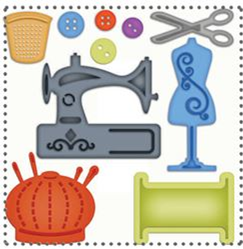 To recognize 4-H members who have excelled in clothing projects and exhibit skills
in the following:
To recognize 4-H members who have excelled in clothing projects and exhibit skills
in the following:
- Application of knowledge of fibers and fabrics to wardrobe selection
- Clothing construction
- Fashion interpretation and understanding of style
- Good grooming and poise in front of others
- Modeling and presentation of themselves and their garments
ACTIVITY
The activity consists of informally modeling a garment constructed by the contestant and a short presentation detailing the cost, use and care of the garment. The fiber(s) and fabric(s) from which the garment(s) is/are made should be identified and reasons given for their choice. Presentations should be one to two minutes and delivered without the benefit of notes. Contestants should be prepared to answer judges’ questions about the construction of the competition garment(s).
CATEGORIES
The Fashion Revue --Constructed Garments has two categories, Casual and Dressy.
- Casual, for school and casual after-school activities, such as spectator sports, picnics, and casual dates. Examples are: pants, jeans, skirts or shorts and tops, jumpsuit, casual or sporty dresses, skirts or pants with casual/sporty jackets, school coats and coordinated separates. (No swimwear.)
- Dressy, for ensembles worn to dressy activities such as church, dinner dates, theater and job/scholarship interviews.
Note: This category does not include garments worn for formal evening events and formal weddings.
Competition garments must be a complete ensemble and must include a top and bottom. (Exception: Full-length coats entered in the construction division may be worn over ready-to wear garments.) Ready-made shirts, blouses, body suits, sweaters, etc., are notallowed in the ConstructedGarmentdivision of the activity except when worn under a full
-length coat (as noted above). Ensembles must fit into one of the categories as outlined above.
Accessories such as ties, belts, scarves, shoes, etc., should be used appropriately to enhance the garment and do not have to be home-sewn. No additional garments may be carried with the exception of props (i.e., tennis racket, golf club, corsage, Teddy bear).
Fine Arts—Poetry
OBJECTIVES
- Targeted life skills: decision-making; self-esteem; self-discipline;

self-motivation; teamwork and cooperation
- Assist 4-H members in discovering and developing their talents.
- Develop 4-H members' appreciation for talent and the performing arts.
- Develop poise, confidence, and performance skills of 4-H members.
- Encourage 4-H members to pursue special or formal training to further develop their talents.
POETRY ACTIVITY
- Poems must be original work of 4-H member. Poems from other sources will not be accepted. Poems must be titled and may be on any subject.
- Length of Poem
- Juniors—3 line minimum and 25 lines maximum
- Seniors—3 line minimum and 29 lines maximum
- Poems must never have been published or submitted to another agency.
- Poems should be typed and three copies will need to be submitted to judges in the following format: A. Typed, font size 12
- Single spaced
- Do not use tabs, bolds, italics, underline, etc.
- Poems will be judged on the following:
- General—suitable for age, original work criteria meets County Congress guidelines. B. Poetic Devices—rhyme, rhythm, stanza format, figures of speech and imagery.
- Originality and Expression—choice of topic, vocabulary control, fluency continuity. D. Mechanics—punctuation, spelling, capitalization and correct word choice.

Fine Arts—Creative Writing
OBJECTIVES
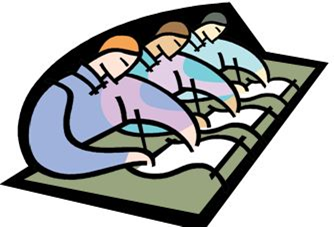
- Targeted life skills: decision-making; self-esteem; self-discipline; self-motivation; teamwork and cooperation
- Assist 4-H members in discovering and developing their talents.
- Develop 4-H members' appreciation for talent and the performing arts.
- Develop poise, confidence, and performance skills of 4-H members.
- Encourage 4-H members to pursue special or formal training to further develop their talents.
CREATIVE WRITING ACTIVITY
- 4-H members may submit only one story. The entry must be original and must have been written by the
4-H member presenting it.
- Narratives should be typed and three copies will need to be submitted to judges in the following format: A. Typed, font size 12
- Single spaced
- Do not use tabs, bolds, italics, underline, etc.
- All entries will be evaluated on the following items: (1) title, (2) organization, (3) interview.
- Interviews will be related to the entry, project knowledge and skills.
Judging Classes include: Creative Writing
-- Essay (maximum of 500 words)
- Short Story (maximum of 2000 words)

Public Speaking
OVERVIEW
Learning how to express yourself in a formal public presentation is an asset that
will be valuable to you throughout life. Most 4-H members at some time are called to make a talk or an oral report.
The more professionally you
life. Most 4-H members at some time are called to make a talk or an oral report.
The more professionally you
can present these, the greater will be the response by others and the more opportunities you will have to become involved in like activities.
OBJECTIVES
- Targeted Life Skills: self esteem, marketing, character development, critical thinking, communication and responsible citizenship.
ACTIVITY
Your speech should cover the topic of your choice. You should NOT state your name and club at the beginning of your speech. Also, do NOT solicit questions at the end of your speech. Handheld notes and a rostrum may be used during your speech. Visuals are not allowed, including posters and use of dry erase boards or chalk boards.
Presentation Requirements:
Junior members speech requirements:
- 2-8 minute presentations
Senior members speech requirements:
- 5-10 minute presentations
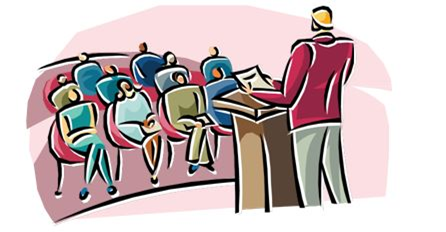
Scoring Sheet —Public Speaking
- Introduction (10 points)
- Did the introduction create interest in the subject?
- Was the introduction short and to the point?
- Organization (15 points)
- Were the main points easy to follow?
- Were the main points arranged in the best order?
- c. Were the sentences short and easy to understand?
- Was the speech interesting?
- Content and Accuracy (20 points)
- Were facts and information presented accurately?
- Was there enough information concerning the subject?
- c. Was credit given to the sources of information if it was appropriate?
- Was the content appropriately related to the horse industry?
- Stage Presence (15 points)
- Was the speaker neat and appropriately dressed?
- Did the speaker talk directly to and look at the audience?
- c. Was the speaker’s posture erect, but not stiff?
- Did the speaker refrain from leaning on the lectern?
- Did the speaker seem relaxed and at ease?
- Delivery (20 points)
- Did the speaker have appropriate voice control?
- Were all the words pronounced correctly?
- c. Did the speaker’s facial expressions reflect the mood of the speech?
- If notes were used, was it done without distracting from the speech?
- Did the speaker seem to choose words at the time they were spoken
instead of memorizing or reading the speech?
- General (10 points)
- Did the speaker convey to the audience a sense of wanting to communicate?
- Did the speech reflect the thoughts and personality of the speaker?
- Conclusion (10 points)
- Was the conclusion short and interesting?
- Did the conclusion properly wrap up the speech?
- c. Could the speaker handle questions easily?
SUBTOTAL
(3 points subtracted for each minute or fraction of a minute over or under the time limits)
TOTAL
Judges: please feel free place comments on the back of the scoring sheet
Scoring Sheet Method Demonstrations—Illustrated Talks
|
Name of 4‐H’er |
Subject: |
- Presentation
- Introduction
- Introduced self and demonstration (15)
- Caught attention of audience and created interest
- Gave purpose of presentation and told why selected subject
Comments:
- Body
- One idea presented (40)
- One idea thoroughly developed
- The idea communicated to audience
- Important points clearly stated
- Presented information in a logical order
- Interesting and useful
- Educational
- Used accurate and up-to-date information
Comments:
- Summary
- Major points reviewed (15)
- Short and concise
- Practical questions answered accurately
Comments:
- Use of equipment and/or visuals
- Well-selected, neat and organized (10)
- Used effectively
Comments:
- Time 5 points, penalty for over under Subtotal
TOTAL
Judges: please feel free to place additional comments on the back of the scoring sheet.
Scoring Sheet—Purchased Fashion
|
Name: |
|
Junior or Senior |
|
Division: Purchased |
|
|
|
Garment Category: (Circle One) |
Casual or Dressy |
|
|
Factors to Consider |
Point Value |
Score |
|
Knowledge of fiber and fabric characterisƟcs,uses and care (30%) |
|
|
|
Identfication of fiber source and characteristics |
10 |
|
|
Identfication of fabric weave or knit; fabric type |
10 |
|
|
Knowledge of garment care |
10 |
|
|
Comments: |
||
|
Ability to evaluate garment quality and apply knowledge (30%) |
|
|
|
Garment style makes good use of fiber and fabric and is appropriate for the intended use |
5 |
|
|
Garment is well made (plaids and seams match, edges smooth, hem even, closures neat, well pressed) |
10 |
|
|
Garment is a good value for its cost |
10 |
|
|
Garment meets the competion eligibility requirements (division, category, complete garment or ensemble) |
5 |
|
|
Comments: |
||
|
Appearance, fit, and fashionability (40%) |
|
|
|
Fit compatible with current fashion trends and garment style |
10 |
|
|
Accessories fashionable and appropriate for the garment |
10 |
|
|
Modeling and presentation skills, poise, and grooming |
10 |
|
|
Ouƞit appropriate for wearer and intended occasion |
10 |
|
|
Comments: |
||
|
Total Score |
100 |
|
Judges: please feel free place comments on the back of the scoring sheet
Scoring Sheet—Constructed Fashion
|
Name: |
|
Junior or Senior |
|
Division: Constructed |
|
|
|
Garment Category: (Check One) |
Casual or Dressy |
|
|
Factors to Consider |
Point Value |
Score |
|
Knowledge of fiber and fabric characterisƟcs,uses, care (20%) |
|
|
|
Identfication of fiber source and characteristics |
5 |
|
|
Identfication of fabric weave or knit; fabric type |
5 |
|
|
Knowledge of garment care |
10 |
|
|
Comments: |
||
|
Ability to evaluate garment quality and apply knowledge (60%) |
|
|
|
Garment style makes good use of fiber and fabric and is appropriate for the intended use |
15 |
|
|
Garment is well made (plaids and seams match, edges smooth, hem even, closures neat, well pressed) |
25 |
|
|
Garment is a good value for its cost |
10 |
|
|
Garment meets the competion eligibility requirements (division, category, complete garment or ensemble) |
10 |
|
|
Comments: |
||
|
Appearance, fit, and fashionability (20%) |
|
|
|
Fit compatible with current fashion trends and garment style |
5 |
|
|
Accessories fashionable and appropriate for the garment |
5 |
|
|
Modeling and presentation skills, poise, and grooming |
5 |
|
|
Ouƞit appropriate for wearer and intended occasion |
5 |
|
|
Comments: |
||
|
Total Score |
100 |
|
Judges: please feel free place comments on the back of the scoring sheet
Poetry & Creative Writing
Name:
DOB: 
Title/Subject Matter:
|
Judges: please write-in the number that you’ve rated for each category. Each has a scale of points possible. Please use those to help guide you without going over the maximum in each of the categories. |
Excellent |
Very Good |
Good |
Average |
Needs Improve- ment |
|
Title:
|
22-25 pts possible |
17-21 pts possible |
11-16 pts possible |
6-10 pts possbile |
0-5 pts possible |
|
Organization:
|
36-40 |
29-35 |
20-28 |
11-19 |
0-10 |
|
Interview: Project knowledge through…
|
31-35 |
23-30 |
16-22 |
9-15 |
0-8 |
|
ADDITIONAL COMMENTS: |
|||||
Judges: please feel free place comments on the back of the scoring sheet
Career Communications
The Career Communication Contest is an opportunity for members to practice the skill of applying for a job. The contest involves completing the provided job application, cover letter, resumé and completing an interview. The member selects the type of job they are applying for, but it should be one for which they currently have skills.
Job Application
Students will complete the provided job application, prior to the personal interview. While the application will be generic, 4-H members are to complete the application for their intended job.
Cover Letter
Students should write a cover letter outlining their experiences that would be pertinent to a potential employer.
Resumé
Each contestant will provide a cover letter and resumé. Each participant’s resumé and application will be the result of his or her own efforts. If a contestant’s materials are found to not be their original work, the contestant will be disqualified from the Career Communication Contest. Participants are encouraged to use examples related to their 4-H experience whenever possible when preparing their resumé.
Job Interview
The interview will be conducted by one to three judges. Questions will pertain to participant’s current skill level and the specific job for which they are applying. As this contest simulates an actual job interview, spectators will not be permitted in the interview judging room.
Job Descriptions
Please prepare a resumé for a position of your choice. Life experiences and education should be used to show that you are a good candidate for the selected job. Highlight your 4-H experiences whenever possible.
Length
The job interview may be up to 20 minutes in length. Judges will determine when the interview is finished.
Number of Presenters
This is a contest for individuals.
Questions
Only judges may ask questions.
Attire
Attire and grooming suitable for the specific job interview.
Other
Contestants are encouraged to research career communications, including resumé and cover letter writing and interviewing skill. Career exploration and knowledge should be part of the research.
Position Knowledge and Self-Reflection
Tell us about yourself and your qualifications for this job.
What are your greatest strengths? Weaknesses?
Give an example of how one of your strengths was helpful on a team (work, school, etc.).
Give an example where you had to compensate for a weakness (yours or a team’s) and how you did so.
Why did you choose to apply for this position?
Tell us about your skills related to this position.
Describe any training or experience you’ve had that is related to this job.
What do you think will be your biggest challenge with this job?
What do you think will be easiest part of this job for you?
How has your education or training prepared you for this position?
If we were to gather several of your supervisors, teachers and co-workers into a room and ask them what your greatest strengths are, what would they say? If we asked them the areas you needed to improve, what would they say?
What do you believe are the most important characteristics and skills you would contribute?
Tell us what you know about the position and what questions you have about the position.
Organization, Time Management and Goals
What are your short-term and long-term goals?
Tell us about an important goal that you have achieved and the steps it took to achieve the goal.
What is something you have done that makes you feel proud? What accomplishments have given you the most satisfaction in life?
How do you prioritize tasks?
Tell us what motivates you in your job.
What do you currently do to be effective in time management and organization – balancing multiple project priorities?
Can you describe a time when you had to organize a rather large project/event and how you managed it?
Work Environment and Relationships
Describe a conflict you’ve had in work/school/an organization and how you solved it.
Have you ever had a conflict or difference of opinion with a supervisor or teacher? If so, describe the situation and how you handled it.
What qualities would you hope for in a supervisor?
Describe on ideal day on the job.
Tell us about some of your favorite classes, teachers or hobbies.
Would you rather work with information or people?
Can you describe a time when you had to work with someone you did not especially care for (client, co-worker, class member, volunteer) and how you handled that situation?
How do you feel about taking direction from co-workers or supervisors? (Explain)
How do you prefer to be approached about errors in your work?
How would you approach one of us if you found errors in our work?
Career Communications Letter
Sample Cover Letter
[Date]
Clover Green
Forever Green Farm
1234 Purple Ribbon Place
Heartland, MT 54444
Dear [name of person application being submitted to],
My 4-H club leader, Stan Dout, told me that you are looking for summer help with farm, ranch and child care duties. I was excited to hear about your needs, as I have just started to look for summer work and feel that my skills match your needs. I am currently finishing my sophomore year of high school and have been a 4-H member for eight years. In 4-H, I take both market livestock and breeding livestock projects. I am also involved in our 4-H dog project and have my own dog breeding business. I enjoy animals and have skills with large and small animals. I have taken the child development project in 4-H as well. I attended Babysitter Boot Camp through MSU Extension two years in a row.
I have attached my resume and a completed job application, which I found on your farm website. Both items describe my work experience. I worked for Happy Acres Farm last summer. I started out doing simple chores with the livestock and eventually was given more responsibilities such as tracking feed. This winter, my employers asked me back to help with calving and in the spring I helped with branding. They have now hired a full-time, yearround hand. At Happy Acres, I also had child care duties. Most of the time I watched the children, ages three and five, while the parents worked nearby. I planned special activities for the children each day, whether it was a theme day, like Monkey Mania, or a special art, food, reading or singing activity. I especially enjoyed the days when both parents were haying and I was solely responsible for the children. We had several summer picnics and made our own splash park!
Thank you for time reviewing my application. I look forward to the opportunity to meet your family to discuss your needs for summer help and my qualifications.
Sincerely,
Clover Green
Clover Green
Career Communications Reseme
Sample Resume
Clover Green
1234 Purple Ribbon Place Ÿ Heartland, MT 54444
406-444-4444 Ÿ [email protected]
|
OBJECTIVE |
To assist farm and ranch family with children and daily chores. |
|
EDUCATION |
Blue and Gold High School, Class of 2018 2014-present 3.5 GPA |
|
|
Greenfield Middle School 2010-2014 |
|
TRAINING |
Farm Safety First, MSU Extension 2015, Certificate |
|
|
First Aid, County EMS 2015, Certificate |
|
|
4-H Leadership Retreat, MSU Extension 2014-2015 |
|
|
Hands Only CPR, County EMS 2013-2015 |
|
|
Babysitter Boot Camp, MSU Extension 2013 and 2014, Certificate
|
WORK EXPERIENCE
|
|
Blue and Gold School Concessions 2014-present |
|
|
Responsible for organizing food stand, making food, serving customers, making change and cleaning concessions booth. |
|
|
Happy Acres Farm 2014-2015 |
|
|
Responsible for feeding livestock and pets daily; tracking feed; mowing yard; entertaining |
|
|
children while parents worked nearby; answering phone. |
|
|
4-H Camp Counselor 2014-2015 |
|
|
Responsible for planning camp activities with team; developing cabin activities; preparing and teaching classes for 50 campers; cleaning campgrounds; assisting with meal serving |
|
|
and cleaning. |
|
LEADERSHIP |
Blue Ribbon 4-H Club |
|
|
Treasurer 2014-2016 |
|
|
Vice President 2013-2014 |
|
|
Recreation Leader 2012-2013 |
|
|
Blue and Gold High School |
|
|
Class President 2016 |
|
|
Class Secretary 2014 |
|
ACTIVITIES & COMMUNITY SERVICE
|
4-H, FCCLA, FFA, Church Youth Group, Volleyball, Swim Team, Band, Choir, 4-H Food Drives, Adopt-a-Highway, Random Acts of Kindness |
|
SKILLS |
Proficient in Microsoft Office; Google Apps; 4-H livestock project record keeping; |
|
|
prioritizing and managing time to complete multiple tasks; creative and flexible in solving |
|
|
problems; bringing a positive attitude to my daily work. |
References available upon request.
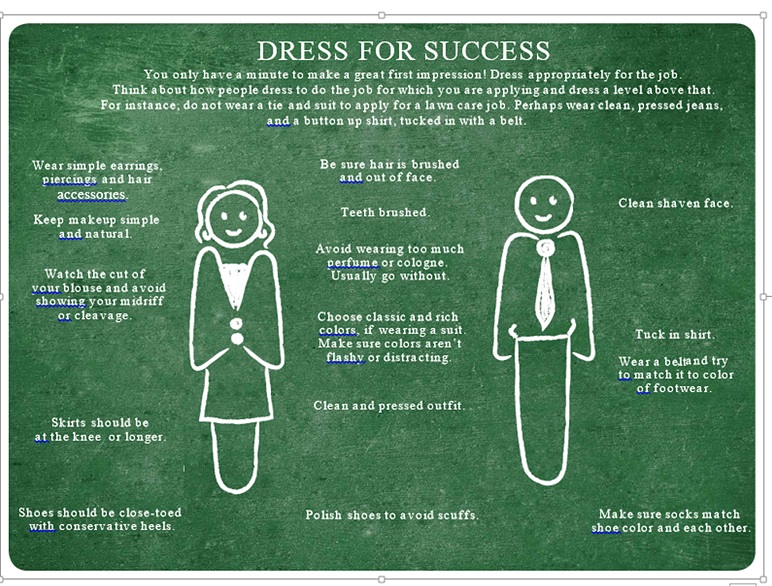
Career Communications
EMPLOYMENT APPLICATION
|
Applicant Information |
|
Full Name: |
__________________________________________________ Date: _______________________ Last First M.I.
|
|
Address: |
_______________________________________________________________________________ Street Address Apartment/Unit# _______________________________________________________________________________ City State Zip Code
|
|
Phone: |
____________________________________ Email: _____________________________________
|
|
Position Applied For: ________________________________________________________________________ |
|
|
Education |
|
Elementary: |
____________________________ Address: _________________________________________
|
|
Middle: |
____________________________ Address: _________________________________________
|
|
High School: |
____________________________ Address: _________________________________________
|
|
Other: |
____________________________ Address: _________________________________________
|
Classes, Certification or Training:
|
Previous Work, Employment, and Volunteer Service |
|
Company or Organization: ______________________________________ Phone: ________________
|
|
Address: ________________________________________________ Supervisor: _________________
|
|
Job Title: ___________________________________________________________________________
|
|
Responsibilities: _____________________________________________________________________
|
|
Date From: _________ To: _________ Reason for Leaving: __________________________________
|
|
May we contact your supervisor for a reference? YES NO |
|
Company or Organization: ______________________________________ Phone: ________________
|
|
Address: ________________________________________________ Supervisor: _________________
|
|
Job Title: ___________________________________________________________________________
|
|
Responsibilities: _____________________________________________________________________
|
|
Date From: _________ To: _________ Reason for Leaving: __________________________________
|
|
May we contact your supervisor for a reference? YES NO |
What did the 4-H member do particularly well?
What could the 4-H member have done differently to make the presentation more effective?
Evaluator’s
Stir-Up Cooking Guidelines
The Stir-Ups Cooking Challenge is a live timed event to prepare an appealing, nutritious meal that can be prepared easily by using common ingredients available in many homes. An dish should be prepared using food safety techniques and reflect creative use of ingredients. The presentation should exhibit knowledge of the foods prepared and utilize excellent public speaking and visual aid skills. Contestants have a total of 25 minutes to prepare a dish meeting the requirements below, clean-up their kitchen, and give a 3-8 minute oral presentation. The 25 minutes time allotment includes time needed for clean-up and the presentation.
Theme: The Featured Ingredient of Stir-Ups will be Canned Tuna. Tuna products are abundant, low fat, are a great source of protein, and can be incorporated in almost any dish. Creativity is the key to unique tuna dishes!
Materials To Bring
- All ingredients needed for your recipe, tuna is provided by competition. Any ingredients needing to be cooked (pasta, rice, beans, etc.) will need to be prepared ahead of time. There are no facilities for cooking hot meals or keeping dishes warm at County Congress.
- Necessary items to prepare your dish including but not limited to knives, pots, pans, and other cooking equipment.
- Apron
- Hair tie for long hair (longer than chin-length)
- Cutting boards (beware of cross contamination!)
- Serving dishes for presentation (plates, bowls, etc.)
- Completed Recipe form—2 copies
Guidelines
Contestants will have 25 minutes total (this includes cooking, clean-up, and presentation) to make one complete entrée (not a meal) and must use canned tuna as the mandatory ingredient and at least five additional ingredients.
The dish should be visually appealing, nutritious and show creativity. Contestants will prepare two competitive plates for the food judges and one plate to use as a visual aid in the educational presentation. (Total of 3 plates)
Contestants should use effective work habits and sanitary food preparation practices. Following the preparation of the dish the contestant(s) will give an oral presentation to the judges. Severe point deductions will be made for any unsafe food preparation practices (ex: hand washing, temperature checks, cross-contamination.)
Oral Presentation: should address selection of the dish; preparation process; nutritional value, potential alterations, food safety measures taken in preparation, and overall learning. This presentation should be designed following the 4-H illustrated talk format with visual aids and include a sample of the dish prepared. Presentations should be 3-8 minutes in length and is included in the 25 minutes provided for cooking and clean-up.
Contestants must dress to impress. Attire for presentation that reflects/supports the theme are encouraged, but not required.
**
Individuals and teams that are 13 years or older receiving a blue placing will be eligible to attend MT 4-H Congress to compete. Two participants or teams with the highest numerical scores from the State 4-H finals will be awarded a trip to National 4-H Congress in Atlanta, GA. The State contest is highly competitive so practice, practice, practice!!
The U.S. Department of Agriculture (USDA), Montana State University and the Montana State University Extension Service prohibit discrimination in all of their programs and activities on the basis of race, color, national origin, gender, religion, age, disability, political beliefs, sexual orientation, and marital and family status.


